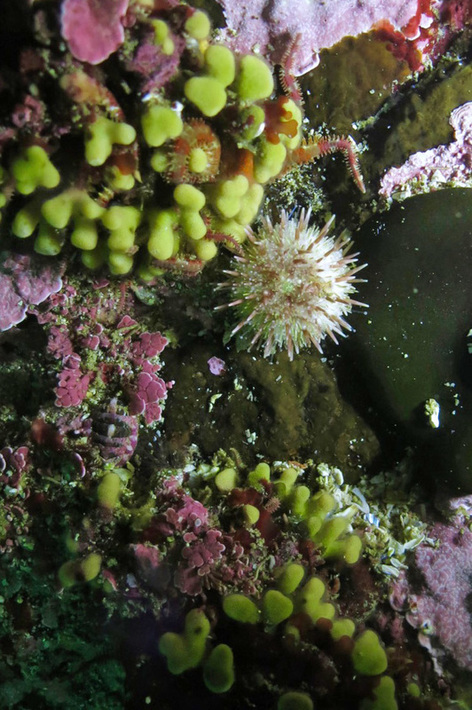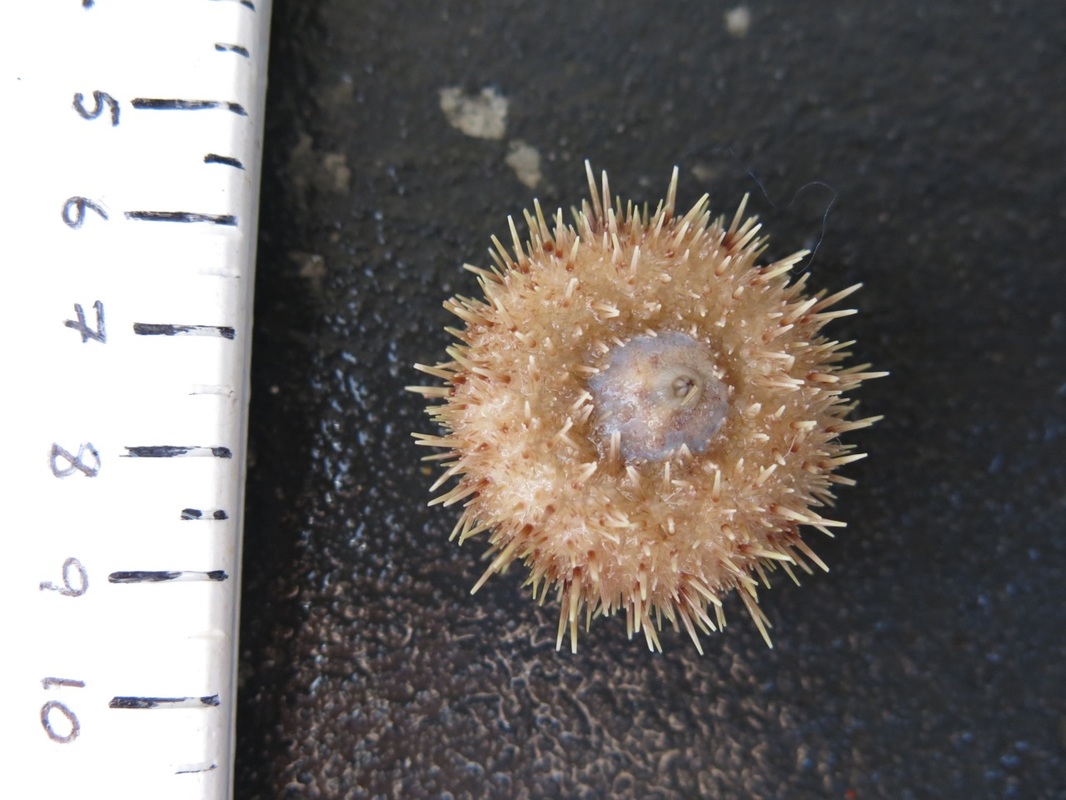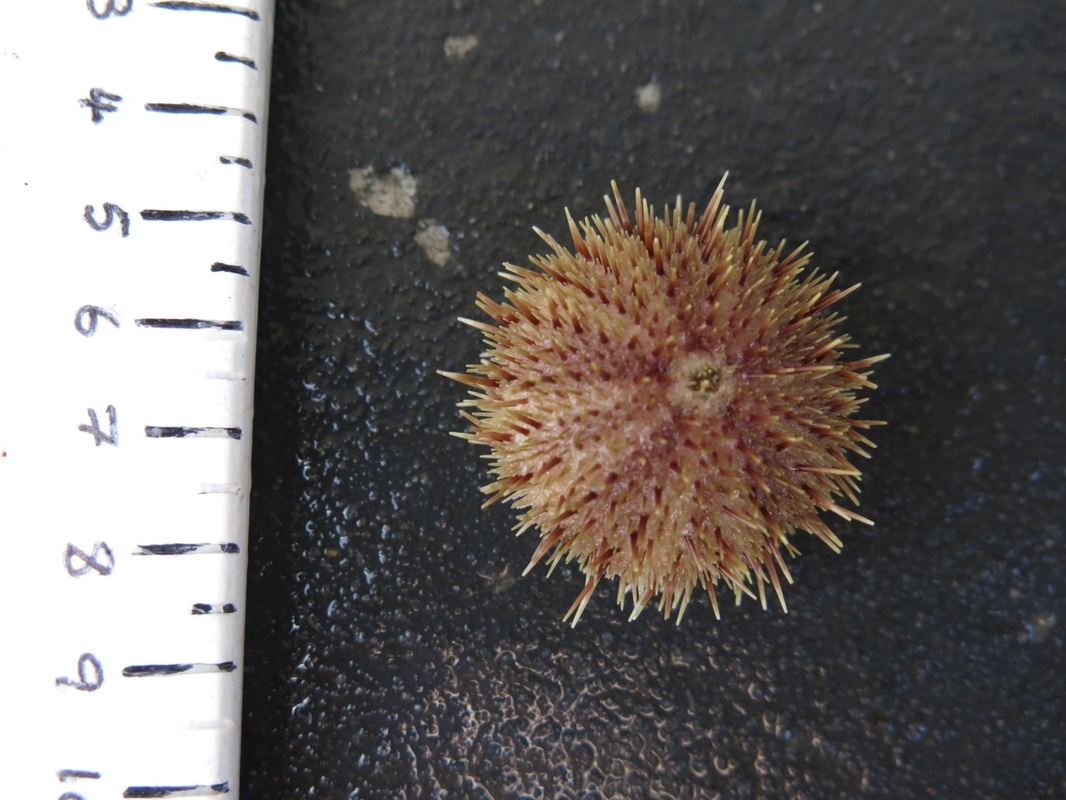White sea urchin • Strongylocentrotus pallidus
Identification
Despite its name, the white sea urchin isn't necessarily all white. Its spines are whitish and its tube feet are pale, but the spines can be brownish at the base and the test (shell) can be variably pale-coloured, from greenish or yellowish to brownish. The spines are different lengths; the diameter of the test reaches 9 cm while the height is only to 3 cm.
Habitat & Range
The white sea urchin is a subtidal species found to 1600 m deep. It inhabits rocky areas, and ranges in the Pacific from northern Alaska to Oregon. It is also found in the North Atlantic.
Similar Species
The green sea urchin (Strongylocentrotus droebachiensis) tends to be pale green (sometimes purple) and not much darker than the white sea urchin. The green sea urchin's tube feet are darker than its spines and usually purple, while the spines are equal in size and denser than the white urchin's spines. The white sea urchin's test is flatter than the green's.
Despite its name, the white sea urchin isn't necessarily all white. Its spines are whitish and its tube feet are pale, but the spines can be brownish at the base and the test (shell) can be variably pale-coloured, from greenish or yellowish to brownish. The spines are different lengths; the diameter of the test reaches 9 cm while the height is only to 3 cm.
Habitat & Range
The white sea urchin is a subtidal species found to 1600 m deep. It inhabits rocky areas, and ranges in the Pacific from northern Alaska to Oregon. It is also found in the North Atlantic.
Similar Species
The green sea urchin (Strongylocentrotus droebachiensis) tends to be pale green (sometimes purple) and not much darker than the white sea urchin. The green sea urchin's tube feet are darker than its spines and usually purple, while the spines are equal in size and denser than the white urchin's spines. The white sea urchin's test is flatter than the green's.
References
Cowles, D. (2005). Strongylocentrotus pallidus (G.O. Sars, 1871). Invertebrates of the Salish Sea. Rosario Beach Marine Laboratory. Accessed 08/07/2016.
Harbo, R. M. (1999). Whelks to whales: Coastal marine life of the Pacific Northwest. Madeira Park, BC: Harbour Publishing. P. 146.
Lamb, A., and Hanby, B. (2005). Marine Life of the Pacific Northwest [electronic version]. Madeira Park, BC: Harbour Publishing.
Authors and editors of page
Kelly Fretwell (2016).
Cowles, D. (2005). Strongylocentrotus pallidus (G.O. Sars, 1871). Invertebrates of the Salish Sea. Rosario Beach Marine Laboratory. Accessed 08/07/2016.
Harbo, R. M. (1999). Whelks to whales: Coastal marine life of the Pacific Northwest. Madeira Park, BC: Harbour Publishing. P. 146.
Lamb, A., and Hanby, B. (2005). Marine Life of the Pacific Northwest [electronic version]. Madeira Park, BC: Harbour Publishing.
Authors and editors of page
Kelly Fretwell (2016).






